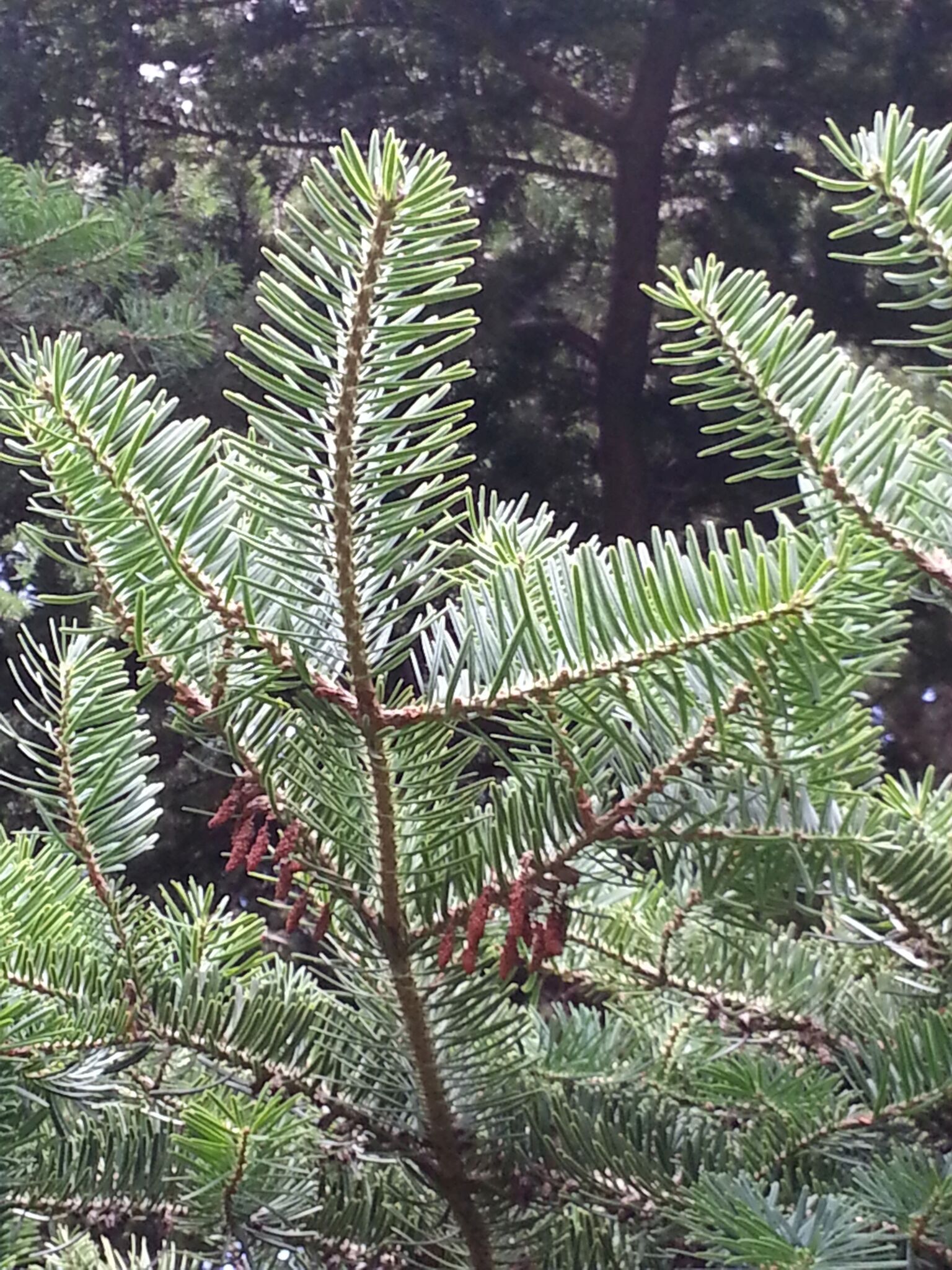
Classical Latin name for the fir.
Evergreen, resinous, mostly conical trees although there are many miniature cultivars with magnificent forms and foliage colour. Bark smooth. Branches whorled. Buds variously shaped, resinous. Shoots sometimes hairy, the leaves spirally attached on stem but occasionally arranged more or less into 2 ranks. Leaves solitary, linear and mostly flattened with pale longitudinal bands below and sometimes also above, attached by a disc-like base that leaves a round scar at leaf fall. Male cones axillary on the underside of the previous year's growth. Female cones erect on the upper branches, often purple, ripening and breaking up in a single year; bracts forked, sometimes protruding between the scales. Seed with large wing.
Firs are generally unsuited to the climate of south-eastern Australia, except for Tasmania and the hilly districts of the south, but even here they do not always perform well. They require a moist, rich soil in a damp climate with at least some shade. Several of the species described in this genus are grown only as cultivars.
c. 50 species of the Northern Hemisphere, mostly from cold sub-alpine and cool-temperate regions with only a few extending into the warm-temperate zone.
Based largely on the colour, length, arrangement and banding of the leaves; the resin character of the buds; colour and hairiness of the new growth. Cones are difficult to obtain as they are often high in the tree and split up at maturity. The upper surface of the leaf is interpreted here as the side that faces skyward.
13 species at the Mt Lofty Botanic Gardens, Adelaide (1991); 32 species may be seen at the Rangiwahia pinetum in New Zealand (1990). There were 29 species at the Otway Ridge Arboretum, Victoria in 1991.
Seed; cultivars by grafting.
Crushed leaves smell like turpentine or citrus fruit. Leaves attached to shoot with a pronounced round disc-like pad that leaves a round scar when the leaves fall; cones upright, on top of branches, breaking up at maturity.
Liu (1971), Rushforth (1976), Horsman (1984), Farjon &Rushforth (1989).
Source: (1995). Pinaceae. In: . Horticultural Flora of South-eastern Australia. Volume 1, Ferns, conifers & their allies. The identification of garden and cultivated plants. University of New South Wales Press.
